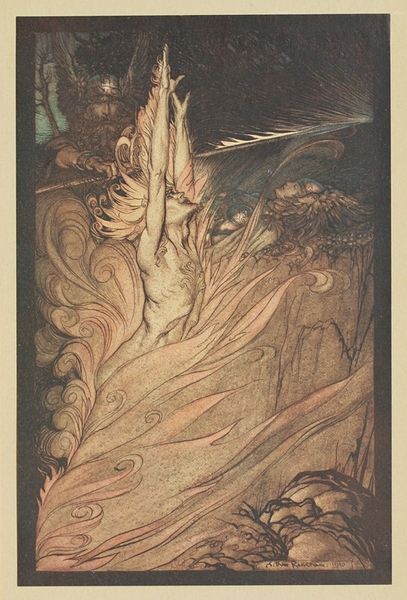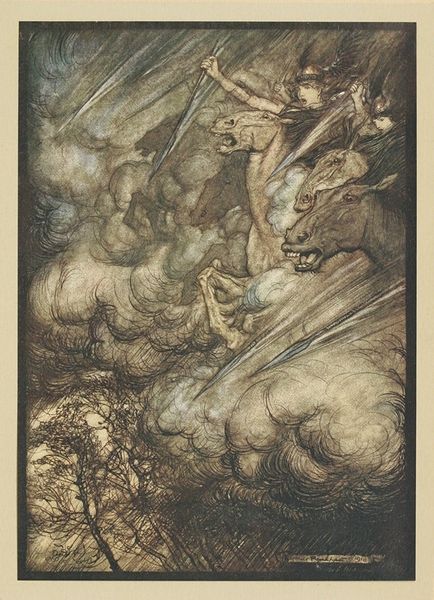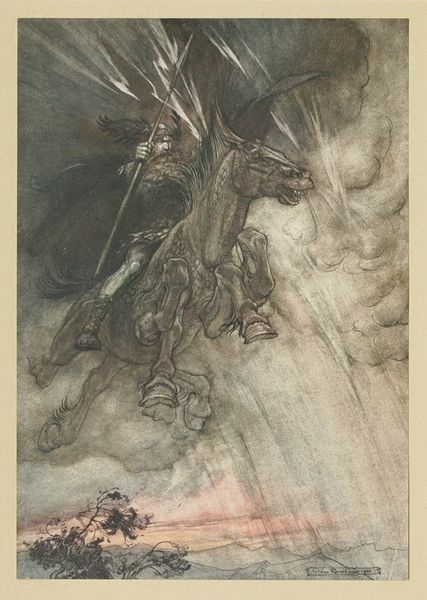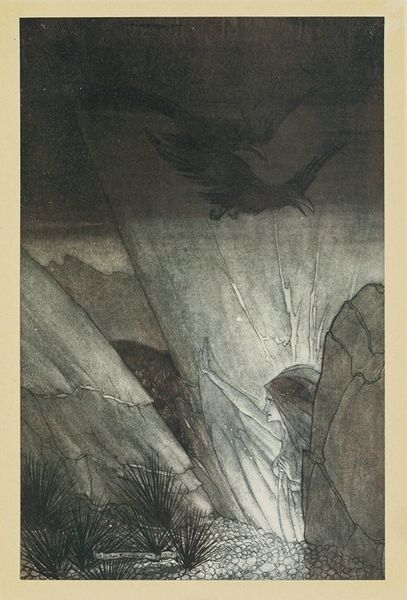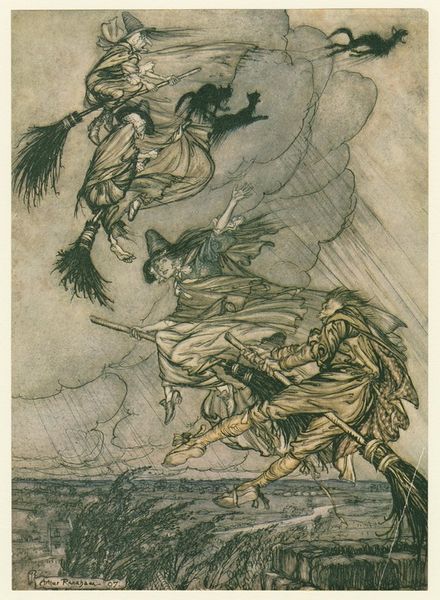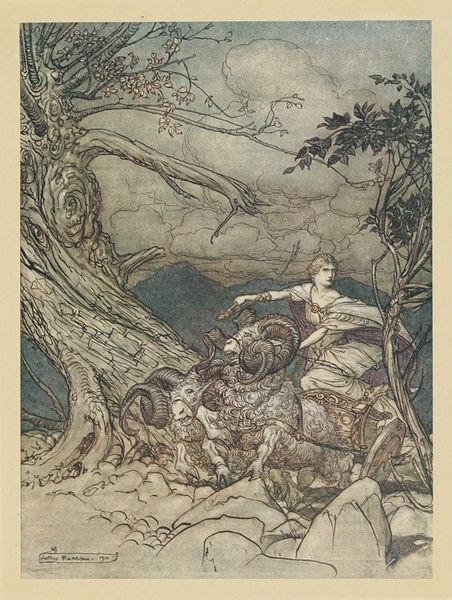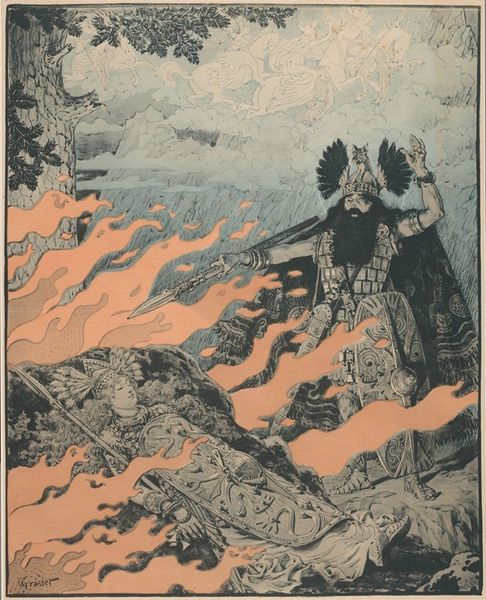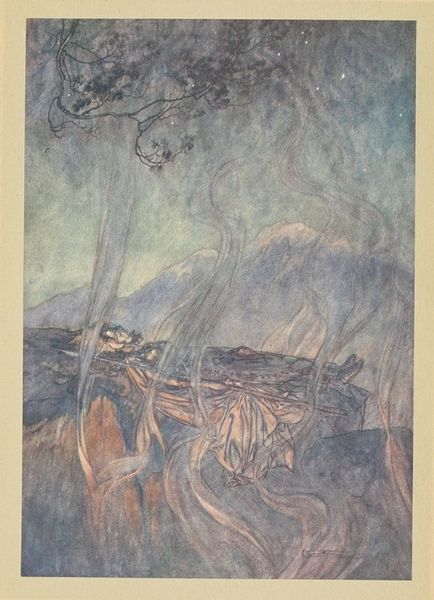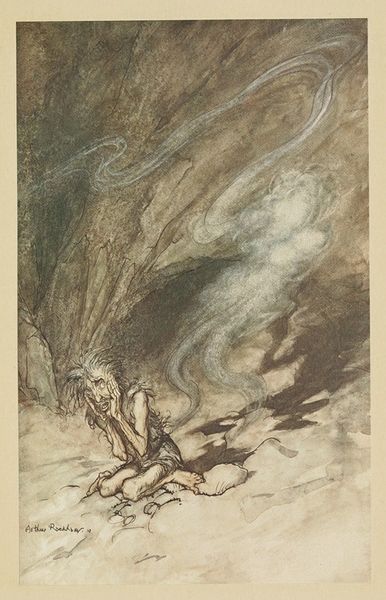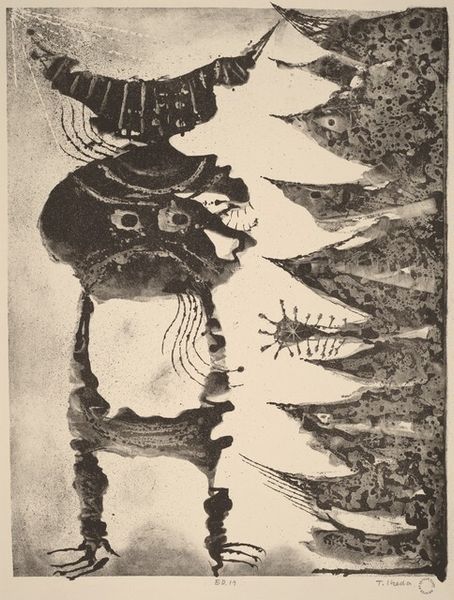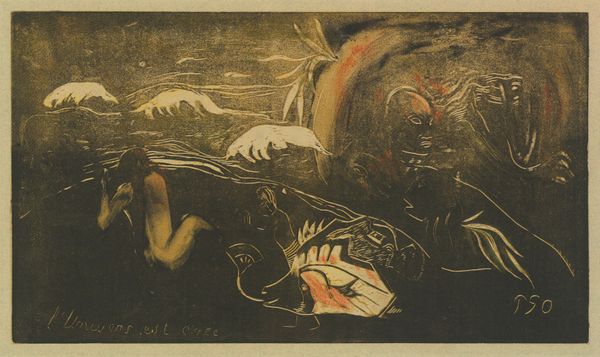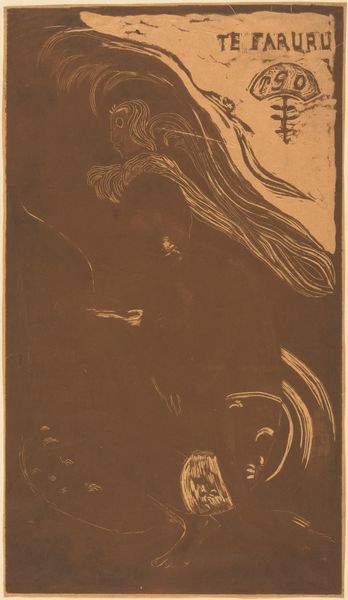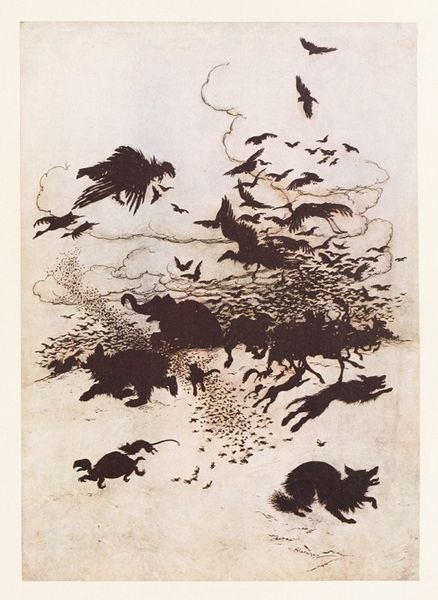
As he moves slowly away, Wotan turns and looks sorrowfully back at Brunnhilde 1910
0:00
0:00
watercolor
#
narrative-art
#
landscape
#
watercolor
#
symbolism
#
watercolour illustration
#
watercolor
Copyright: Public Domain: Artvee
Curator: Arthur Rackham created this watercolor, “As he moves slowly away, Wotan turns and looks sorrowfully back at Brunnhilde," in 1910. Editor: It’s immediately evocative; the colors are muted, almost somber. The composition, with the dark silhouette against a fiery sky, definitely suggests a tragic farewell. Curator: Absolutely. Rackham was deeply engaged with the epic narratives of his time. Here, he’s illustrating a key moment from Wagner’s “Ring Cycle,” drawing from Norse mythology, where Wotan, the chief god, must punish his Valkyrie daughter Brunnhilde. Editor: The imagery certainly speaks to the weight of that paternal decision. That burning circle, presumably the fire Wotan casts, isolates Brunnhilde, suggesting themes of isolation and sacrifice… but why encircle her? Is it imprisonment, or protection? Curator: Precisely. The symbolism is rich, and can be approached through various perspectives. Considering feminist theory, one could interpret the artwork as reflective of the limited agency women faced, even those of divine status, under patriarchal power structures. Brunnhilde is being punished for acting according to her own will and compassion, disrupting a certain established order. Editor: Yes, and the fire itself carries dual meaning: punishment, but also purification. Across cultures, fire cleanses and transforms, implying Brunnhilde's trial might be a necessary stage in a journey, something transcendent. Notice Wotan's spear, it stands tall against the glow. Does it signal control? Strength? Divine Right? Curator: Undoubtedly. It emphasizes his role in enforcing the established order, though his sorrow suggests it’s a duty rather than a desire. Rackham gives the figures archetypal weight; yet at the same time, he explores their internal conflicts, making them surprisingly modern. There's almost an absurdist quality. Here, divinity clashes with deeply flawed human impulses, exposing vulnerability in unexpected ways. Editor: Thinking about it, the gnarled tree echoes Wotan's inner turmoil—rooted, yet twisted. Its branches reach like desperate pleas, framing a moment caught between myth and raw human emotion. Rackham clearly understood the timelessness of these core emotions. Curator: Indeed, the artwork’s resonance lies in its ability to translate these foundational themes into a powerful visual language. It invites us to reflect on themes of power, obedience, and sacrifice—are there limits on love when enforcing abstract notions of justice? Editor: I agree, and thinking about the lasting effect of symbols that spark enduring emotions in art across history reminds me that certain narratives still resonate today, echoing across time and cultures.
Comments
No comments
Be the first to comment and join the conversation on the ultimate creative platform.
